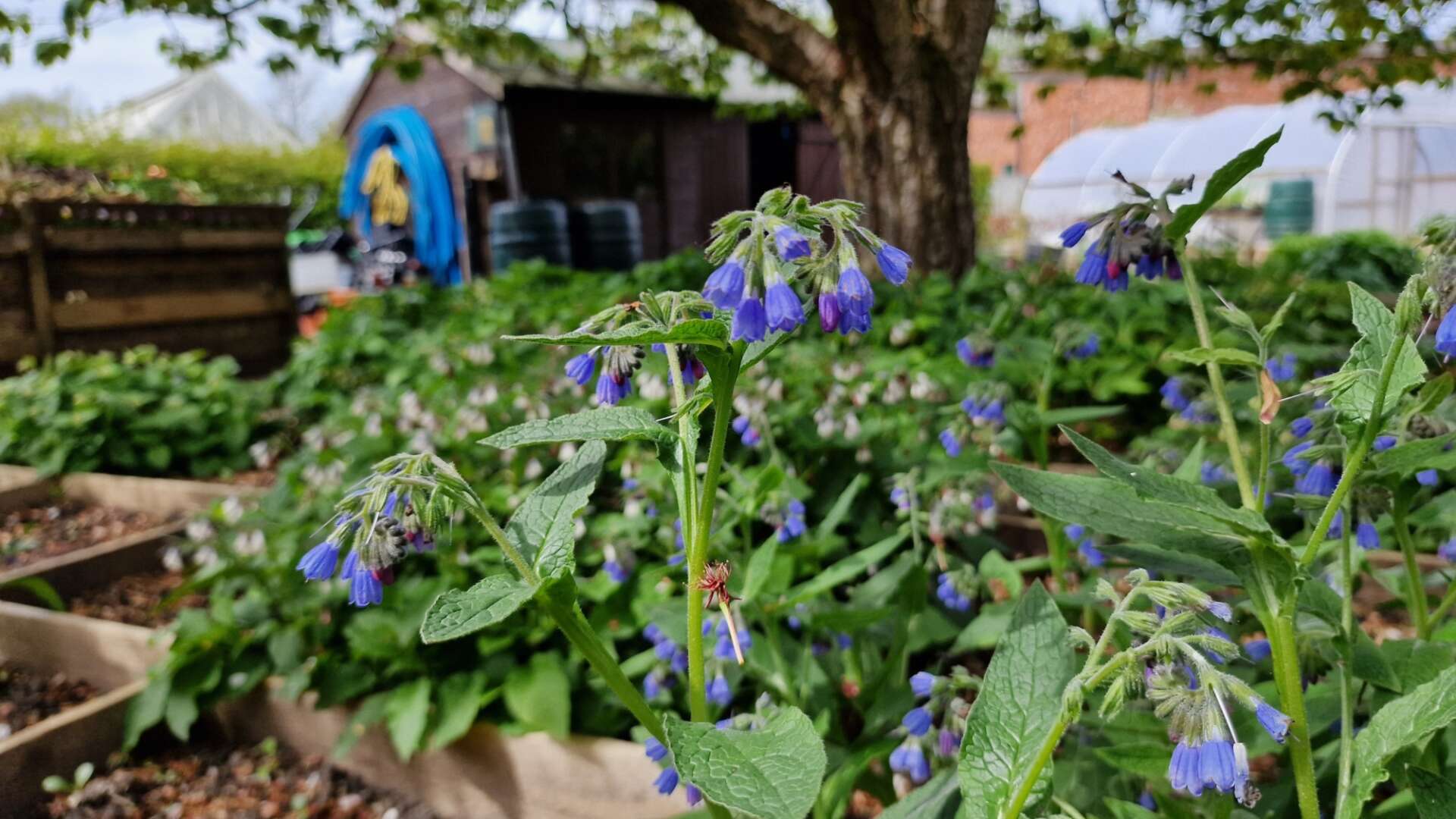Help us grow our comfrey collection

It wouldn’t be an exaggeration to claim that comfrey is very much at the heart of Garden Organic. In fact, it’s been at the centre of the charity since its early conception when our founder Lawrence D Hills created the Henry Doubleday Research Association in Bocking Essex.
When Lawrence was researching one of his many books, he came across research by a Quaker called Henry Doubleday who introduced Russian comfrey to the UK and was curious about its possibilities. Lawrence made the decision to continue this research, and in 1954 he began experimenting with the plant as a natural fertiliser in Bocking, hence the name of one of the varieties ‘Bocking 14’.
In our National Collection at our organic garden in Ryton we now have 30 varieties, but we’d like more!
Exploring comfrey varieties
Common comfrey (Symphytum officinale) is a vigorous perennial that can reach 1.5m in height. It has large hairy dark green leaves and clusters of tubular purple, pink or creamy yellow flowers (already confusing!) Although the flowering period is usually considered May to June, in the collection our plants start around April and continue right through until the end of summer.
Comfrey plants can be difficult to tell apart as they tend to cross pollinate. Here in the demonstration garden, we’re working hard to keep the different varieties in their own space. They all have beautiful flowers but very different habits: some creep, some sprawl and some just reach for the clouds. We house them in individual beds, regularly dead head and remove any interlopers. Being sterile, ‘Bocking 14’ is slightly better behaved!
What we’re looking for
When we began the collection two years ago, only 35 comfrey were listed as available by the RHS - but according to Wikipedia there are now 59 recognized species. Every new search appears to shed light on another variety.
Part of the reason for the confusion is that there are many synonyms used, and several common names, so it can be tricky to know for sure what you’re looking for. However, we’re really interested in the following and would love your help to find them:
- Symphytum brachycalyx - also known as Palestine comfrey, it has alternate leaves and white flowers from March-April.
- Symphytum creticum – Cretan comfrey growing in the Caucasus region. Large hairy leaves, white flowers with recurved petals.
- Symphytum tauricum - considered endangered, this variety grows to 40cm high with large oval leaves and white flowers. Also known as Crimean comfrey.
- Symphytum davisii - native to Greece and considered rare. This has oval leaves and serrated, slightly corrugated margins. White flowers from April to early May.
- Symphytum longisetum - evergreen with large oval leaves with long hairs. Small white flowers with a yellow centre.
If you can help Emma find these varieties, please email [email protected]

What's so good about comfrey?
Comfrey might look ordinary but there are several reasons why this plant is important to the organic grower.
1. It’s an excellent liquid fertiliser and soil enhancer.
2. It attracts and provides habitats for pollinators, bumblebees and other regular beneficial visitors, including spiders.
3. It’s a great compost activator, just add the leaves to your heap to speed up decomposition.
4. It can be used as a mulch, the leaves can be directly added to the soil or shredded first.
Find out more about comfrey, and how to make liquid plant feed, via our dedicated hub